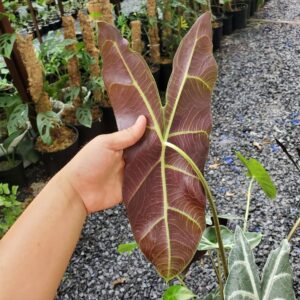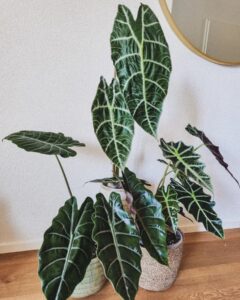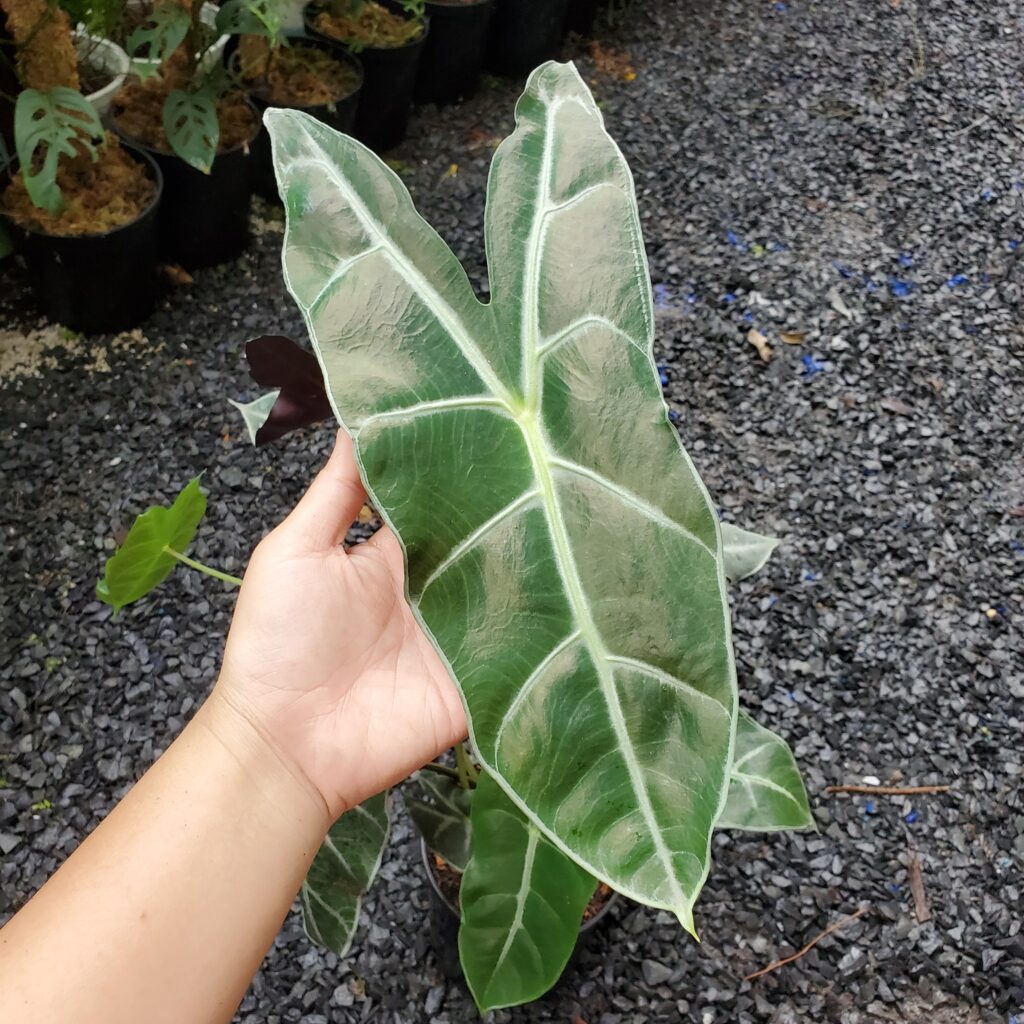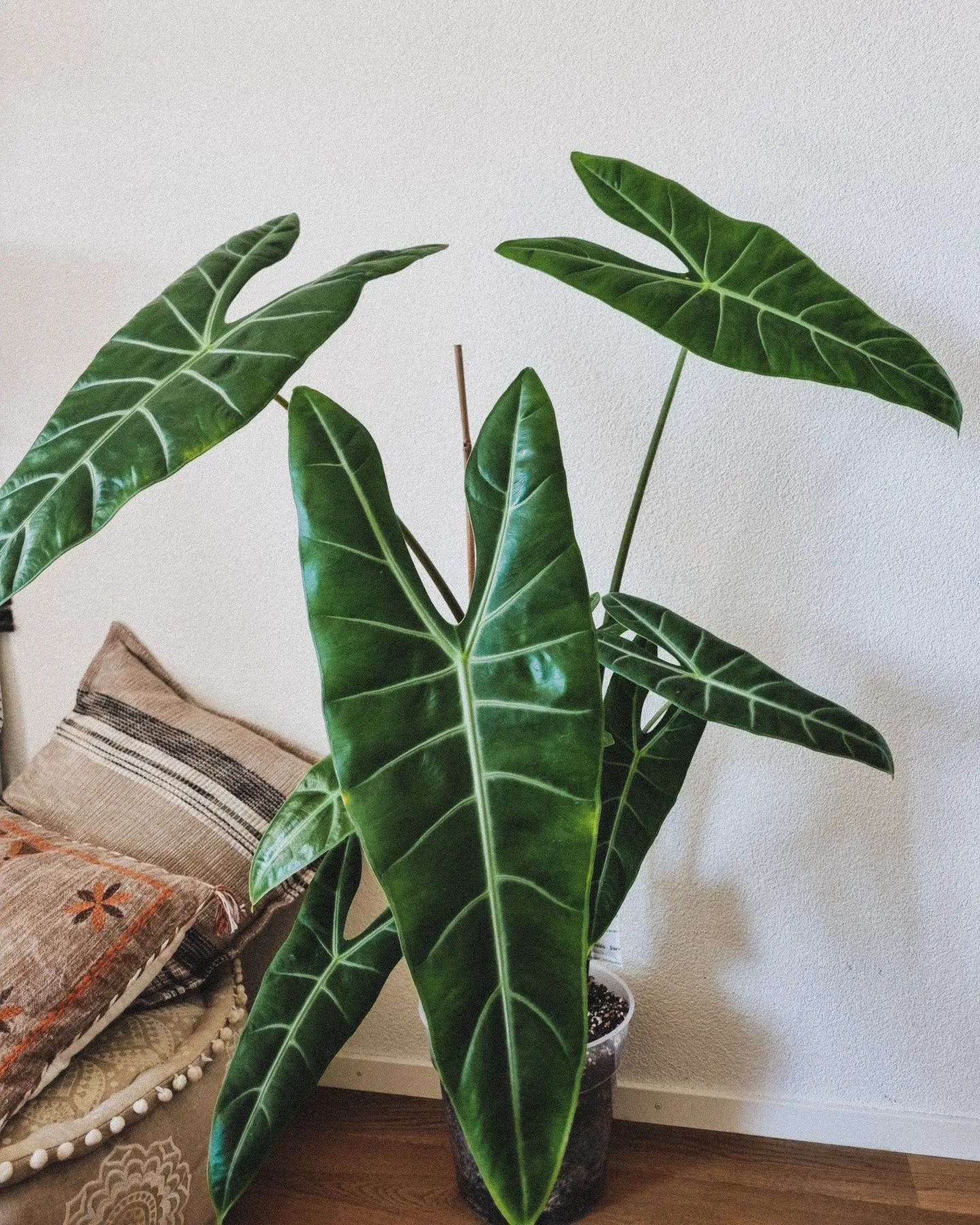Basic Information
Explore the enchanting world of Alocasia Longiloba – a tropical plant with unique foliage. Our blog provides expert advice and insights on how to care for this green companion, from lighting to humidity. Whether you’re a seasoned gardener or a budding enthusiast, learn how to create the perfect environment for your Alocasia Longiloba to thrive. Join us and uncover the secrets to keeping this exotic beauty flourishing in your home or garden.



Light
Alocasia Longiloba is a plant that requires bright and indirect sunlight to grow and remain healthy. It’s important to avoid exposing the plant to direct sunlight as it may cause leaf burn. If the plant is exposed to morning or evening sun, it can benefit from it, but it’s best to avoid intense afternoon sun. To promote balanced growth and prevent lopsidedness, it’s advisable to periodically rotate the plant, ensuring that all sides receive adequate light.
Water
Proper watering is crucial for the health of Alocasia Longiloba. The soil should be kept evenly moist, with the top third allowed to dry out between waterings. Over-watering or prolonged soggy soil can harm the plant and lead to issues like root rot. On the other hand, under-watering can result in stunted growth and yellowing leaves, which can also be detrimental to the plant’s health. It is vital to adjust the watering frequency according to seasonal changes, reducing it in colder months when the plant requires less water.
Tip: Check soil dryness with a finger or meter, water when top 2 inches are dry. Use lukewarm water to avoid root shock, especially in colder months.
Soil
Alocasia Longiloba requires well-draining soil rich in organic matter. A mix of regular potting soil with added components like perlite, coco coir, and bark is ideal. This composition ensures proper moisture retention without waterlogging. The soil should also be slightly acidic to neutral in pH. Regular repotting every 2-3 years in fresh soil mix helps maintain soil health and plant vigor.
Temperature
Maintaining a consistent and warm temperature is crucial for the well-being of Alocasia Longiloba. Any fluctuations or exposure to cold drafts can cause stress to the plant. As this plant originates from tropical regions, it prefers a warm climate. The ideal temperature range for this plant is between 18°C to 25°C (64°F to 77°F). It is quite sensitive to cold and should be safeguarded against temperatures below 15°C (59°F). Alocasia Longiloba cannot tolerate frost and should be kept away from cold drafts and drastic temperature changes.
Tip: Avoid exposing your Alocasia to cold drafts by keeping it away from open windows and doors, especially during winter.
Humidity
High humidity, around 60%-70%, is crucial for Alocasia Longiloba, reflecting its native tropical habitat. Low humidity can lead to issues like brown leaf tips. To increase humidity, use methods like misting, humidity trays, or humidifiers. Ensuring adequate humidity is particularly important during winter when indoor air tends to be drier.
Tip: Grouping it with other plants or placing a water-filled pebble tray underneath the pot can naturally boost humidity levels.
Fertilizer
To promote the healthy growth of Alocasia Longiloba during spring and summer, use a balanced fertilizer every four weeks with a diluted solution. However, reduces the feeding frequency during autumn and winter. It is important to note that over-fertilization can harm the plant. Therefore, it is recommended to follow the recommended dosages and start with a half-strength solution to prevent root burn.
Growth Rate
Alocasia Longiloba grows up to 1m in height and width. It needs optimal conditions for growth, especially in terms of light and feeding. Check the roots annually for root-bound issues and repot if necessary to promote healthy growth.
Pet Safety
This plant is toxic to pets and humans due to the presence of calcium oxalate crystals. Ingestion can cause irritation, swelling, and more severe health issues. Therefore, it’s important to place the plant out of reach of pets and children to avoid accidental ingestion.
Grow in Semi-Hydro
- Alocasia plants excel in Semi-hydroponics (LECA/Pon) due to their natural inclination for root growth and humidity.
- Successfully transitioning Alocasia to Semi-hydroponics is enhanced with a Nutrient Stagnant Wicking (NSW) setup.
- Alocasia roots adapt seamlessly to the water in LECA/Pon, with quick resolution of any root hair issues in NSW setups.
- Fertilizer includes a nutrient mix concentration of approximately 800-1000ppm.
- These plants are versatile in different temperature and humidity settings, thriving in controlled environments.
- Long-term care involves maintaining a constant water reservoir and performing occasional system flushes for sustained growth.
Tips
- Rotate the plant regularly for even light exposure.
- Check soil moisture before watering to avoid over or under-watering.
- Clean leaves monthly to improve light absorption and inspect for pests.
- Avoid placing the plant near radiators or air conditioners.
- In case of pest infestation, treat promptly with appropriate measures like neem oil.
- Observe the plant for signs of stress or disease and adjust care routines accordingly.
The guide on Alocasia Longiloba care provided should prove helpful. Using these tips, you can start with confidence on their gardening journey. It is important to note that each leaf of the Alocasia Longiloba tells a unique story, and with proper care, you can help their plant thrive and achieve vibrant health.
Happy planting! 🌱


